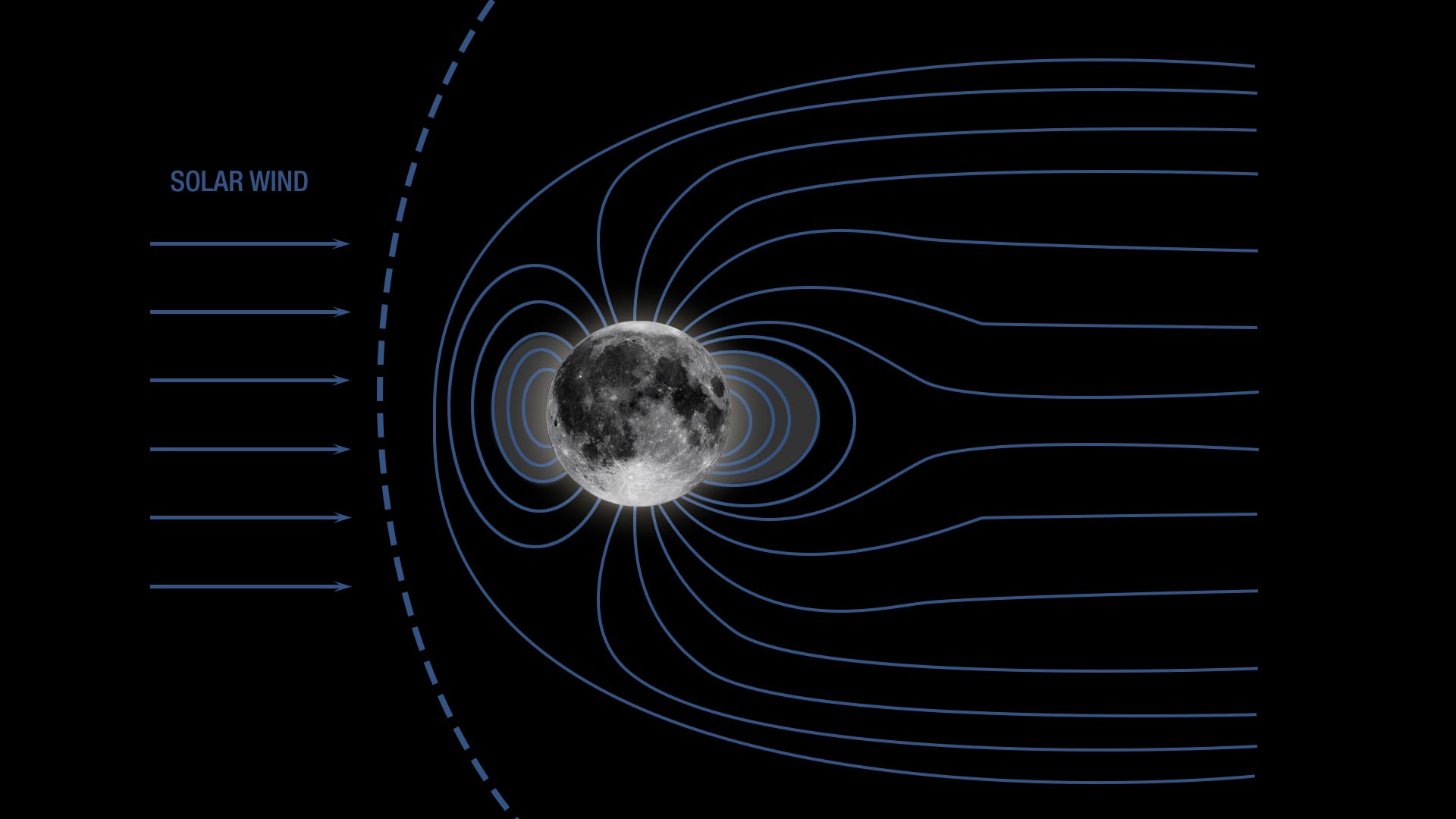
The Earth and Moon, shown here in a composite of two images from the Galileo mission of the 1990s, have a long shared history.
Billions of years ago, they had connected magnetic fields.
Earth and Moon Once Shared a Magnetic Shield, Protecting Their Atmospheres.
This illustration shows magnetic field lines that Earth generates today.
“The Moon seems to have presented a substantial protective barrier against the solar wind for the Earth, which was critical to Earth’s ability to maintain its atmosphere during this time,” said Jim Green, NASA’s chief scientist and lead author of the new study.
By 4 billion years ago, the Moon was three times closer to Earth than it is today – about 80,000 miles away, compared to the current 238,000 miles.
When the Moon had a magnetic field, it would have been shielded from incoming solar wind, as shown in this illustration.
A magnetic field causes electrical charges to move along invisible lines, which bow down toward the Moon at the poles.
A magnetic field serves as a shield causing electrical charges to move along its invisible lines.
Scientists have long known about Earth’s magnetic field, which causes the beautifully colored aurorae in the Arctic and Antarctic regions.
The movement of liquid iron and nickel deep inside the Earth, still flowing because of the heat left over from Earth’s formation, generates the magnetic fields that make up a protective bubble surrounding Earth, the magnetosphere.
The new study simulates how the magnetic fields of the Earth and Moon behaved about 4 billion years ago.
This illustration shows how Earth and its Moon both had magnetic fields that were connected billions of years ago, helping to protect their atmospheres from streams of damaging solar particles, according to new research.
Importantly for the evolution of Earth, the high-energy solar wind particles could not completely penetrate the coupled magnetic field and strip away the atmosphere.
The extreme ultraviolet light from the Sun would have stripped electrons from neutral particles in Earth’s uppermost atmosphere, making those particles charged and enabling them to travel to the Moon along the lunar magnetic field lines.
Scientists calculate that this shared magnetic field situation, with Earth and Moon’s magnetospheres joined, could have persisted from 4.1 to 3.5 billion years ago.
“Understanding the history of the Moon’s magnetic field helps us understand not only possible early atmospheres, but how the lunar interior evolved,” said David Draper, NASA’s deputy chief scientist and study co-author.
Without a magnetic field, the solar wind stripped the atmosphere away.
This modeling study presents ideas for how the ancient histories of Earth and Moon contributed to the preservation of Earth’s early atmosphere.
When astronauts return the first samples from the lunar South Pole, where the magnetic fields of the Earth and Moon connected most strongly, scientists can look for chemical signatures of Earth’s ancient atmosphere, as well as the volatile substances like water that were delivered by impacting meteors and asteroids.
Scientists are especially interested in areas of the lunar South Pole that have not seen any sunlight at all in billions of years — the “permanently shadowed regions” – because the harsh solar particles would not have stripped away volatiles.
Nitrogen and oxygen, for example, may have traveled from Earth to Moon along the magnetic field lines and gotten trapped in those rocks.